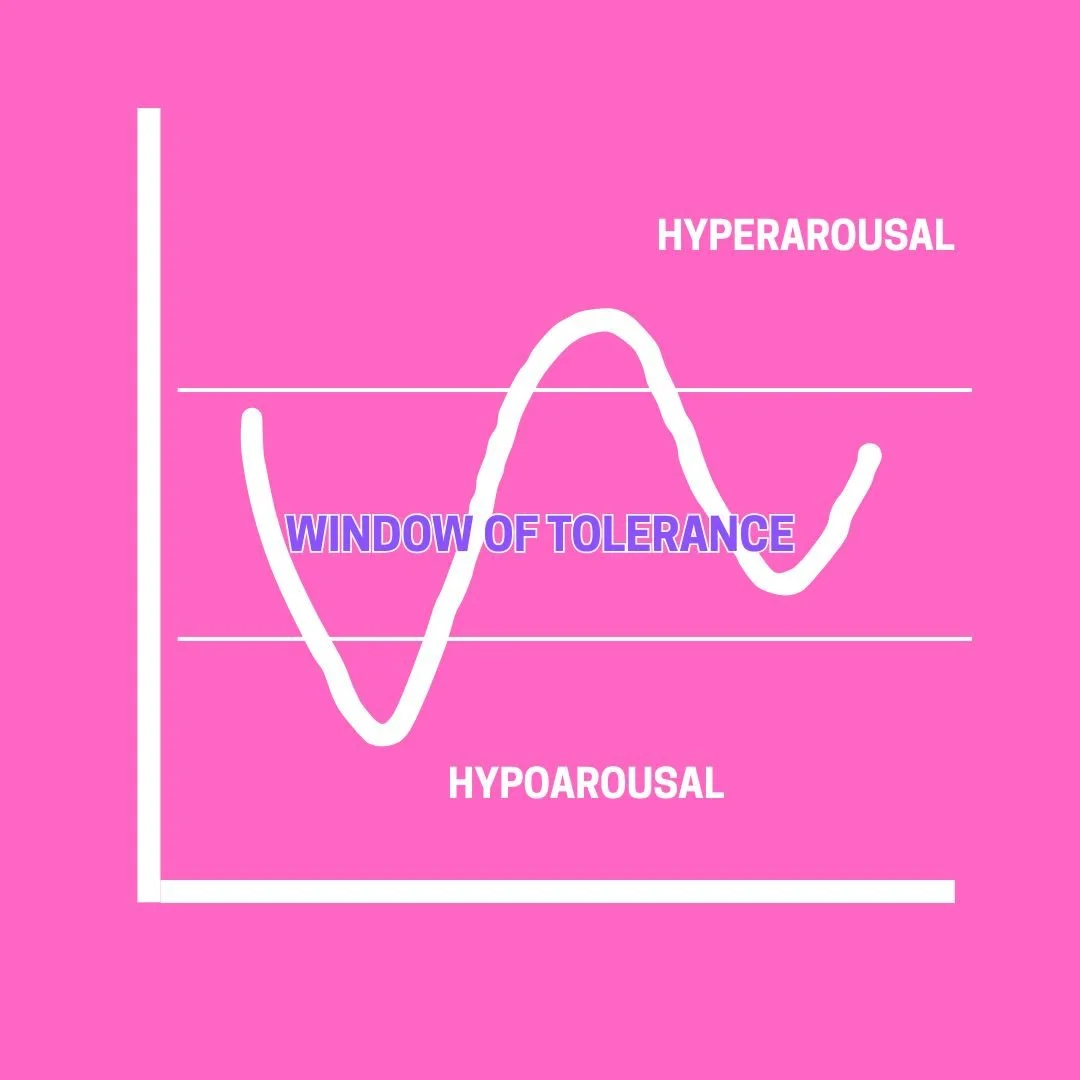Understanding Your Window of Tolerance
How to Recognize and Expand Your Emotional Comfort Zone
Life can be unpredictable. We encounter moments of extreme stress, change and challenges - all of which often effects our emotional experience and expression. Our ability to tolerate and cope with these experiences varies based off of many factors and is what we refer to in trauma work as your Window of Tolerance.
What is the window of tolerance?
In trauma therapy, the window of tolerance refers to that “sweet spot” individualized to you where you are able to most effectively manage and cope with emotions/stressors/experiences. Within this window, we tend to be able to feel more at ease and less stressed or overwhelmed.
There are two specific areas that exist outside the window of tolerance:
hypoarousal: this refers to the experience of feeling more shut down or frozen. It can be typical to feel numb, tired and disconnected in this space.
hyperarousal: refers to the opposite of hypoarousal - jittery, anxious and on edge.
I find it helpful to think of hypoarousal to be a state where it feels there is no energy, hyperarousal is where there is an excess or overwhelming amount of energy and the window of tolerance is that ideal balance.
What affects the window of tolerance?
Since everyone’s mind and body process stress and trauma in different ways, each of our window of tolerance looks different from the other’s. Have you ever had a stressful moment happen more than once yet your reaction is completely different? That is the same for your window of tolerance - it is constantly shifting and changing depending on different factors. Some of these include:
the state of your nervous system: if your nervous system isn’t regulated when an event occurs, your window of tolerance may be more narrow and it may feel more challenging to cope with and process an experience.
unresolved trauma, grief or loss: if your body is experiencing a chronic state of stress, it can be more challenging to manage your reaction to new stressors. Grief and loss can create immense impact in our body, lowering our tolerance to manage difficult situations.
isolation: as humans it is of great service for us to regulate with others. When we do not have the support of other’s it can make it incredibly more challenging to regulate our body.
How to recognize when you are inside versus outside your window of tolerance?
While everyone’s window of tolerance experience can look different, here are some qualities you may notice in your experience:
Inside:
you feel grounded in your body and present to the moment.
you are able to breathe deeply and with ease.
you can identify and manage your emotions
Outside:
racing and overwhelming thoughts.
the experience in your body feels challenging to manage - either your body feels numb or the opposite where it feels constantly jittery.
impulsive and familiar ways of being may come up in reaction to situations - you find yourself wanting to fight, flee or freeze.
What now?
Awareness is one of our greatest tools and the more awareness we develop, the greater sense of control and change we have. Spending some time in mindful awareness is a great opportunity to begin to explore and observe the limits and time spent inside and outside your window of tolerance, in addition to noticing if you tend towards hypo- or hyperarousal.
Having the support of a trained professional can be a great way to gain more insight and finding the tools to cope with stressors. With consistent practice—especially through creative and somatic approaches—you can feel more grounded, more resilient, and more in touch with yourself.
If you’d like guided support, I offer individual Art Therapy and Somatic Healing sessions in Miami (and online) to help you reconnect with your body, express your emotions, and widen your window in a safe, creative space. Click HERE to schedule a free consultation call today.
